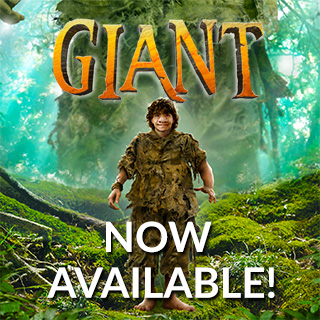The Maps of Creation
Humans are endlessly ingenious. We create, build, compose, craft, and invent. And first of all…we imagine.
Throughout history, people have created tools for almost every purpose – or, more accurately, every purpose imaginable. If someone wonders how to solve a problem, it’s a very good bet that someone has already started to imagine a solution. That has led to countless inventions which shape our lives – from the wheel to the Web, from the supercollider to the sandwich, from the methods for sequencing DNA to the marvels of language.
Everywhere, such inventions are readily visible. But creativity and imagination also shape our world in important ways that often go unnoticed – through the stories we share. In this brief piece, I’d like to focus on the ways that stories profoundly affect our outer and inner worlds.
The outer realm comprises our ongoing efforts to create a better world. A home planet that’s more just, more peaceful, and more healthy. We yearn to conceive new freedoms, new societies, and new ethical foundations for our relations with other people, our fellow creatures, and the planet that sustains us all.
The inner realm comprises our wondrously diverse attempts to understand and recreate ourselves. To be fully human means to strive to illuminate the values that guide us, the choices that shape us, and the spirituality that sustains us.
As we seek to reinvent our world and also ourselves, we are redefining what it means to be mindful – and, indeed, what it means to be human. In both of these realms, the search for truth begins with imagination. And that often takes the form of artistic expression, including stories. For stories – whether they are written, spoken, acted, sung, or dreamed – are, at their core, vehicles for ideas. Sometimes very big ideas, with the magnitude to remake our lives.
Rest assured, I certainly don’t intend to try to list all the ways people have used stories to convey new visions of the world and themselves. That task would be utterly impossible, even if this piece were a thousand times longer. Nor will I name more than a tiny slice of a sliver of a fraction of all the people who have devoted their storytelling talents to reimagining their societies and themselves. All I hope to do is to celebrate the awesome power of stories to recreate both outer and inner worlds.
Stories, you see, are much more than they seem. More, even, than vehicles for ideas. At their best, they are maps – conceptual maps of how we might aspire to live. Maps of creation.
Like the most intricately drawn physical maps, stories can hold multiple layers of meaning. For example, take the celebrated story of Noah’s Ark. Ever since it was first told long ago, that story has been honored as a tale about faith, perseverance, and powers greater than ourselves.
All of those meanings are true. But Noah’s Ark is also a parable about something else: the responsibility of humanity to be good stewards of nature and our fellow creatures. After all, if God asked Noah to go through all that trouble to save two of every animal species – how can we do anything less?
Recreating the World
Libraries and memories everywhere are full of stories in every language that carry powerful ideas about building a better world. Think of the social critiques, bold visions, and inspiring values in the novels of Jane Austen, Charles Dickens, and Voltaire; the plays of Shakespeare; and the writings of James Baldwin and Miguel de Cervantes. Or the epic fantasies of Ursula K. LeGuin and J. R. R. Tolkien; the haiku poems of Basho; and the speeches of Abraham Lincoln and Nelson Mandela. Or the science fiction tales of Octavia Butler, Madeleine L’Engle, and Arthur C. Clarke; the epics of Homer; and the writings of Boris Pasternak.
All these writers, and many more, have helped people to reimagine our world. To turn our most cherished values into reality. To make maps of future civilizations.
Consider the values of hope and aspiration that are embedded in Martin Luther King Jr.’s famous declaration, “I have a dream.” (Also notice that, unlike some current political figures, Dr. King remained steadfastly positive. He knew it was far better to convey dreams rather than nightmares, hopes rather than fears.)
What stories, I wonder, inspired Eleanor Roosevelt to craft the Universal Declaration of Human Rights? What stories prompted Nannie Helen Burroughs to open a school for young African-American women in 1909, the very first of its kind? And what stories did she tell her students to empower them to go into the world with confidence and courage?
Let’s also celebrate the rich lore of Native Americans and other native peoples around the world. The enduring myths told by the ancient Greeks, Vikings, Incans, Polynesians, Africans, and Chinese. The great parables of religious leaders like Buddha, Christ, Moses, Mohammed, Mother Teresa, Confucius, and the Dalai Lama. As well as those of storied spiritual figures such as the wondrous Saraswati, the compassionate White Tara, and the deeply wise Merlin.
Brilliant storytellers have also given us new ways to live more justly as individuals. One example is Henry David Thoreau, whose writings (and actions) gave birth to the practice of civil disobedience, which has inspired many, including Mahatma Gandhi.
Other storytellers have changed the way we think of our relationship to the Earth…and our responsibilities to preserve its biospheres. Writers like Rachel Carson, Terry Tempest Williams, Jacques Yves Cousteau, Jane Goodall, Dorothy and William Wordsworth, Black Elk, and John Muir have inspired us to consider the wellbeing of future generations of humans as well as our companion forms of life. How will they live, find clean water, breathe freely, and experience the grandeur of nature, if we don’t do everything possible to protect all of that?
Given today’s mounting problems of global climate change, damaged ecosystems, species loss, vanishing wilderness, and depleted oceans…we need stories that inspire a renewed connection to the Earth. To fill us with gratitude – and the determination to save our home as well as ourselves.
Lastly, I’d like to mention one more way that stories have shaped our world – through new forms of expression, even new languages. Danté’s Divine Comedy, in addition to giving us vivid descriptions of the afterlife, helped to create the modern Italian language. And while we’re on this topic…how many of the nonsense words invented by Lewis Carroll are now galumphing along in everyday conversation, causing us to burble, gyre, and gimble? (Even if we maybe feel a bit brillig afterward.)
Recreating Ourselves
From earliest times, people have crafted tales to explore our innermost yearnings and to help us make meaningful lives. Through the conceptual maps of stories, we are guided on journeys of self-discovery, learning the surprising geography of our souls.
Just as a lone candle doesn’t flood a room with light, but gently illuminates the room while still leaving space for quivering shadows…stories light our most mysterious inner journeys. Importantly, these candlelight quests require respect for the contradictory parts of ourselves, reverence for the mysteries beyond our ken, and humility to accept how much we still have left to learn. If these quests are often difficult, that’s because those difficulties help us grow.
The most profound stories invite us to examine our assumptions, our values, and our worldviews. Such stories challenge us to meet other people and other cultures very different from our own. As a result, we discover the dignity of others – and become more compassionate, humble, and wise.
Think of the beautiful stories of writers such as Jhumpa Lahiri, Elie Wiesel, and Chimamanda Adichie. Or the wonderfully evocative poetry of Mary Oliver. In her poem Wild Geese, she coaxes us to explore honestly who we are, without ever forgetting our worth as individuals:
Meanwhile the wild geese, high in the clean blue air,
are heading home again.
Whoever you are, no matter how lonely,
the world offers itself to your imagination,
calls to you like the wild geese, harsh and exciting –
over and over announcing your place
in the family of things.
Many of humanity’s most inspired – and inspiring – uses of imagination welcome us into life’s spiritual dimensions. What culture or faith doesn’t have its own cherished tales, luminous candles that help us to glimpse deep spiritual truths?
One of my favorites is the Tibetan chant that says that when we die, we become “rainbow bodies”. Those ethereal forms, radiant and shimmering, then merge seamlessly into the wider universe. What marvelous imagery – evoking wonder, jubilation, renewal, and the mysteries of transformation!
Celtic spirituality is rich with such evocative images. Always imbued with deep reverence for nature, Celtic tales also seek to enliven our senses. As John O’Donohue wrote in his masterwork Anam Cara, “You hear the sound of the winds, you taste the fruits, and above all you get a wonderful sense of how nature touches human presence.”
On top of that, Celtic tales have always called to me for another reason: their enduring appreciation for what lies beyond our reach, between the visible and the invisible. That realm “in between” holds many sources of mystery and inspiration – just as mist is not quite air and not quite water, but something else entirely.
Maybe that’s why I’ve been drawn to the lore of Merlin, the original wizard, who has deep roots in Celtic lore. Even as I’ve added a few stories of my own to that lore, I’ve been following Merlin’s conceptual maps to creating a meaningful life. (Along the way, I’ve also had the fun of drawing a few physical maps of Merlin’s magical realms…such as those in the trilogy The Great Tree of Avalon.)
May you, too, experience the joys and discoveries of stories. May those stories inspire you to explore new worlds. And may you always carry a map…and a candle to light your way.
T. A. Barron, Colorado and Balliol, has written over 30 novels, children’s books, and nature books. His series, the Merlin Saga, has been translated into more than two dozen languages and is currently being made into a feature film by Disney.

